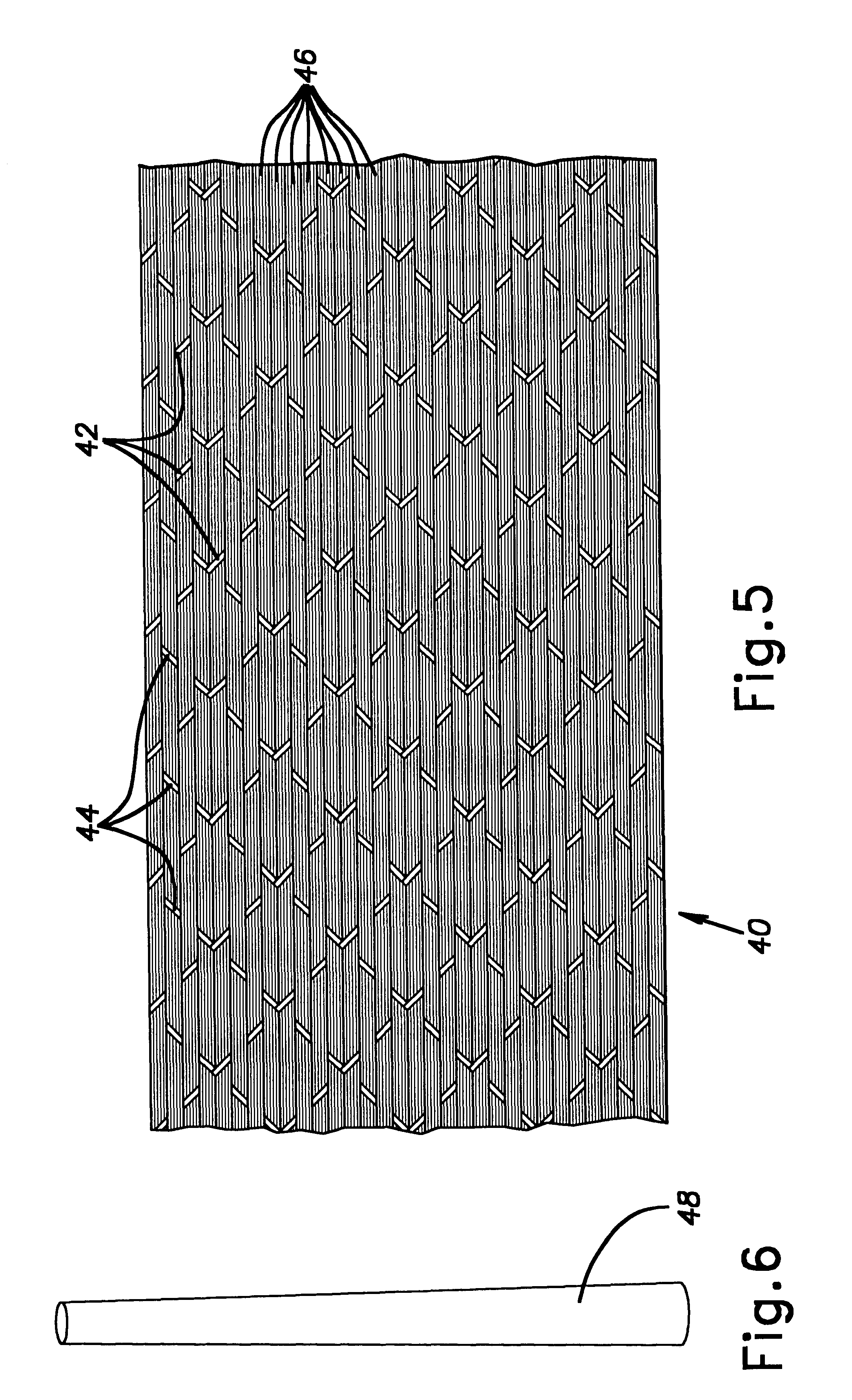Braided structure with elastic bias strands
a braiding and bias strand technology, applied in the field of braiding, can solve the problem of little stretchability
- Summary
- Abstract
- Description
- Claims
- Application Information
AI Technical Summary
Problems solved by technology
Method used
Image
Examples
Embodiment Construction
As used in the specification and claims herein, the term "strand" includes a single fiber or filament or thread as well as a bundle of fibers or filaments or threads. Each of the following, whether twisted or untwisted, is a strand: a fiber, a filament, a yarn, a tow, and a thread. As used in the claims herein, "elastic" means capable of being stretched repeatedly at room temperature to at least about 1.4 times its original length and which, after removal of the tensile force, will immediately return to approximately its original length. "At least 1.4 times its original length" means if the original length is 1 inch, it can be stretched to a total length of at least 1.4 inches, and after release it will return to approximately 1 inch.
With reference to FIG. 1A, there is shown a portion of a known biaxial braided sleeve which is tubular. It is formed of strands which are braided together. As known in the art, a biaxial braided sleeve has two sets of helical bias strands 14, 18. All of...
PUM
| Property | Measurement | Unit |
|---|---|---|
| braid angle | aaaaa | aaaaa |
| length | aaaaa | aaaaa |
| length | aaaaa | aaaaa |
Abstract
Description
Claims
Application Information
 Login to View More
Login to View More - R&D
- Intellectual Property
- Life Sciences
- Materials
- Tech Scout
- Unparalleled Data Quality
- Higher Quality Content
- 60% Fewer Hallucinations
Browse by: Latest US Patents, China's latest patents, Technical Efficacy Thesaurus, Application Domain, Technology Topic, Popular Technical Reports.
© 2025 PatSnap. All rights reserved.Legal|Privacy policy|Modern Slavery Act Transparency Statement|Sitemap|About US| Contact US: help@patsnap.com



